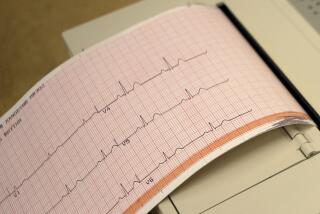Medical errors in hospitals go undetected, study suggests
A 1999 study from the Institute of Medicine reported that avoidable medical errors contributed to tens of thousands of deaths in U.S. hospitals each year.
A dozen years later, quality of care remains a problem, according to a new study.
In the April issue of the journal Health Affairs, which focuses on medical error, a team of researchers affiliated with the Institute for Healthcare Improvement, a think tank in Cambridge, Mass., report that the number of “adverse events” in hospitals -- injuries caused by medical error rather than patients’ underlying conditions -- might be 10 times greater than previously measured.
University of Utah medical professor Dr. David C. Classen and colleagues used a new method to look for bad outcomes, reviewing medical records for 795 patients at three large U.S. hospitals that had “well-established operational patient safety programs.” The patients were all admitted to the hospitals in October 2004.
They scanned the patient paperwork to look for “triggers” -- notations indicating problems -- such as a stop order on medication, an abnormal lab result or use of an antidote. When triggers arose, the team investigated further to see whether there had been an adverse event, and how severe it might have been.
The new method, known as the Global Trigger Tool, detected 354 adverse events among the patients -- 10 times more than other methods in use. Overall, adverse events occurred in 33.2% of admissions.
Two out of three ain’t bad for Meat Loaf, but it’s lousy in a hospital. “Our study suggests that despite sizable investments and aggressive promotional efforts by local hospitals, these reporting systems fail to detect most adverse events,” the researchers wrote.
They noted that the results from the Global Trigger Tool could be high, in part because it defines adverse events more broadly than earlier studies, but also could be low, since poring over medical records doesn’t provide as much information to researchers as observing care firsthand.
April’s Health Affairs also includes case studies illustrating some of the difficulties and triumphs hospitals have experienced as they work to improve quality. “There’s no doubt that we’ve made progress,” wrote journal editor Susan Dentzer, “but it’s also clear that making any headway has been agonizingly slow.”
RELATED:
In the past weeks, the Los Angeles Times has been following one case of extreme medical error that no screening method could have missed: a hospital that transplanted the wrong kidney into a patient. Also, the paper reports on efforts in Washington to improve medical quality.
Previously, our Booster Shots blog reported on how electronic records can’t remove the human factor when it comes to preventing or detecting medical errors and that nurses who are interrupted make mistakes.
More to Read
Sign up for The Wild
We’ll help you find the best places to hike, bike and run, as well as the perfect silent spots for meditation and yoga.
You may occasionally receive promotional content from the Los Angeles Times.











